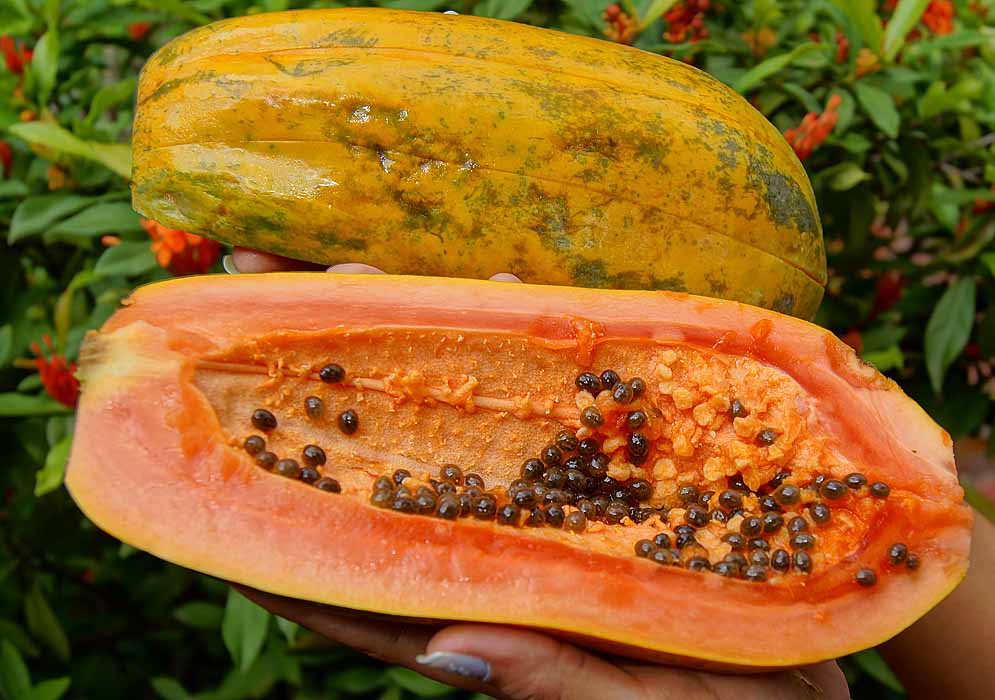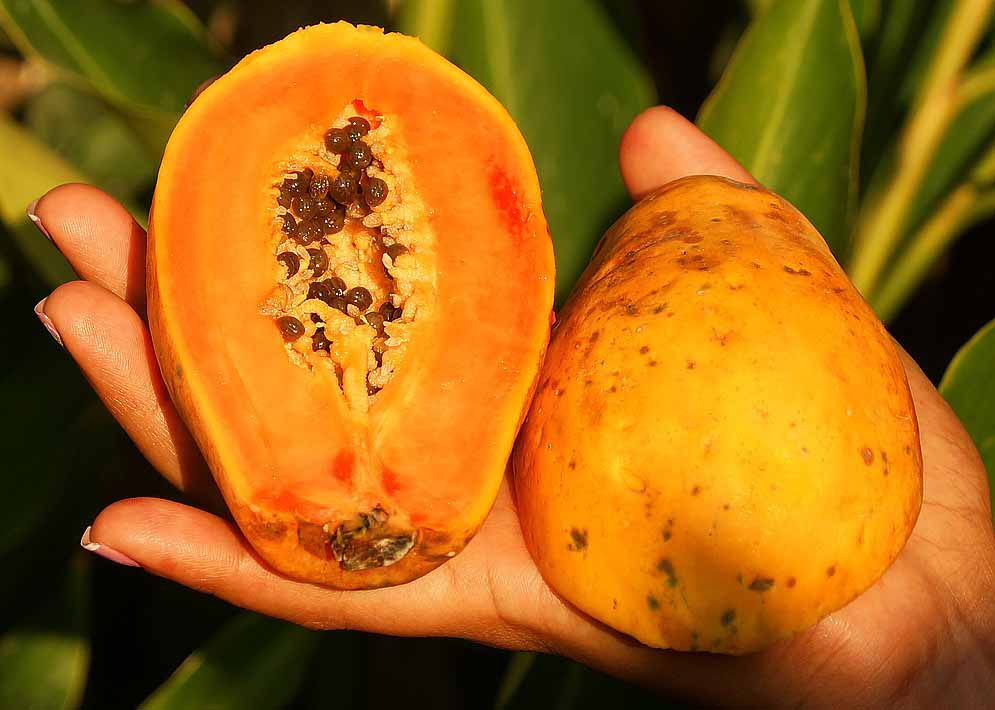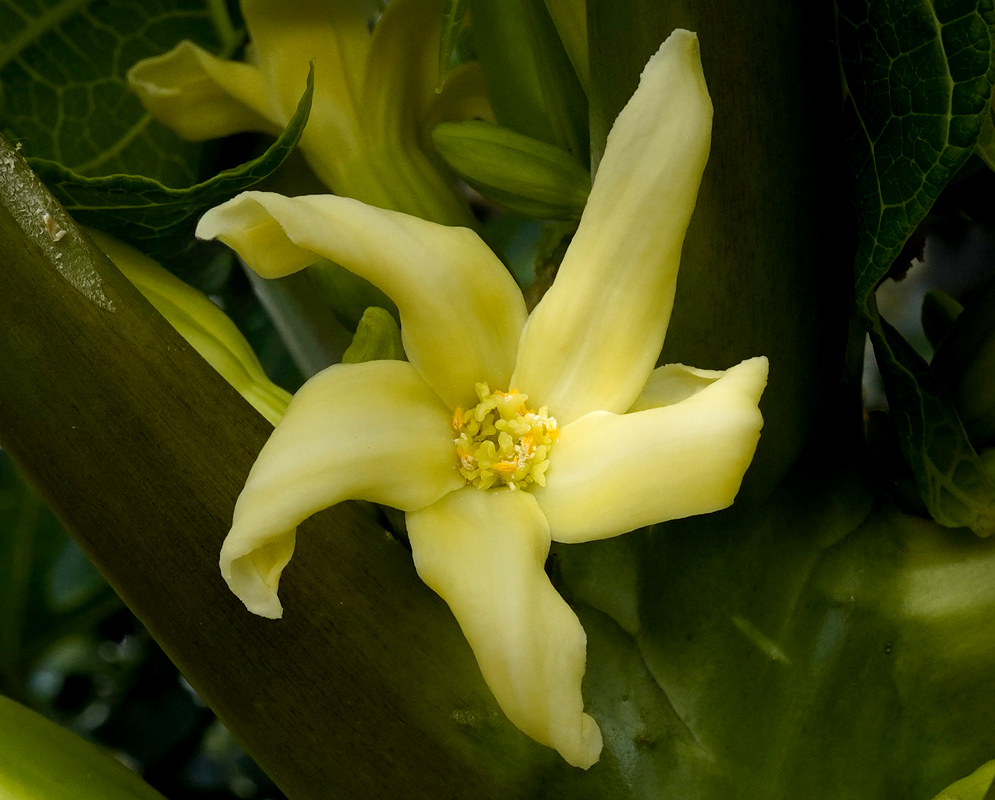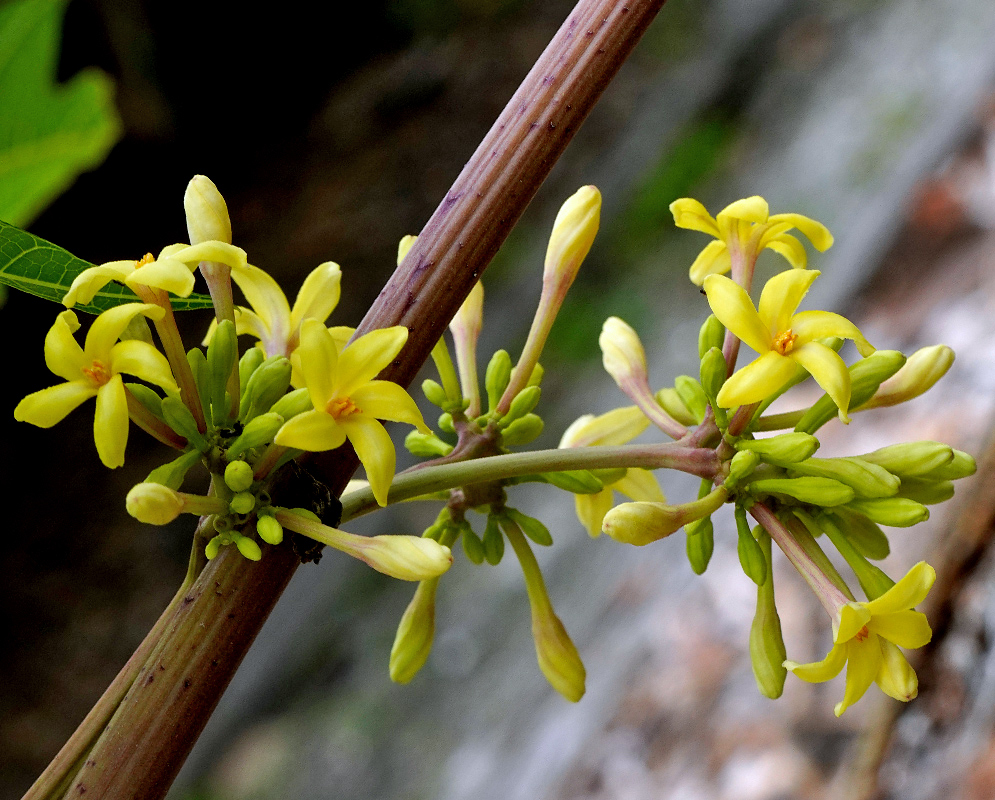This post has 11 Simple Fields-fields attached. Show fields.

Native to northern Central America and southern Mexico, this species has been disseminated to other parts of the globe due to its economic significance and diversity of uses. A small, sparsely branched tree, often with a single stem, it reaches heights of 16 to 33 feet, with spirally arranged leaves clustered at the top of the trunk. Recognized for its medicinal benefits, extracts and phytochemicals from this species have shown potential against various conditions including cancer, inflammation, skin healing, and aging. Its edible fruits, seeds, peels, and leaves are rich in nutrients and have become a staple in human diets due to their nutraceutical values, with parts like seeds and leaves containing 16-32% protein. Commercially, its seeds have found use in poultry rations, credited to their substantial amounts of crude protein, fat, and ash, along with functional properties acting as growth promoters, antimicrobial and antiparasitic factors. India stands as the world's largest producer, contributing 40-plus percent of the global production. The vitamin C-rich fruit is tasty when mixed with other fruits like oranges for juice. The fruit can be as large as a watermelon or small enough to fit in the palm of your hand. Photographed Colombia and Panama.















